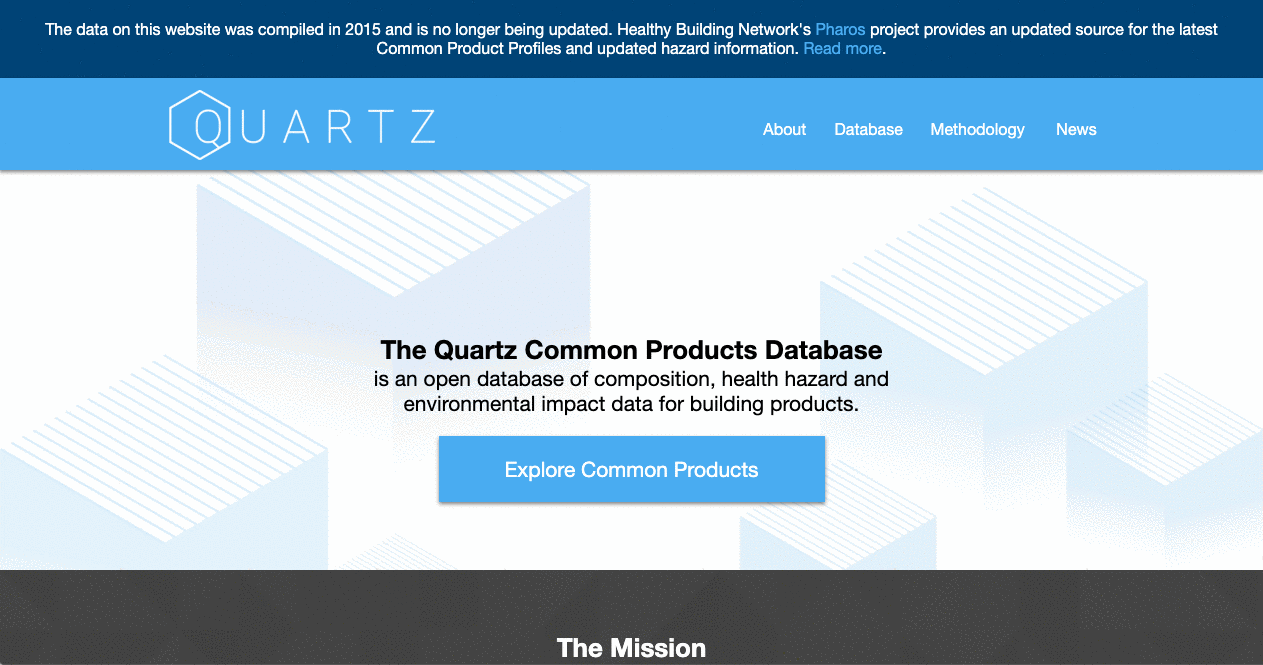Quartz Project
Flux.io (non-operating), Associate Product Manager & Project Lead
2013-2016
Focus Areas
Architecture, sustainability, product certification, open data
Skill Set
Proposal writing and budgeting, data analysis, database management, Neo4j, business development, project management, product marketing, public speaking
Background
Within the AEC (Architecture, Engineering, and Construction) industry, it is incredibly difficult for professionals responsible for providing healthy and sustainable spaces to make informed decisions about building products. The absence of centralized information, poor data accessibility, varying standards, and closed practices makes the curation of data for even a single product a great challenge.
In partnership with Google Real Estate & Workplace Services (REWS), thinkstep and the Healthy Building Network, Flux.io developed the Quartz Common Product Database to help AEC design professionals incorporate sustainability data into their design process, and to demand greater transparency and sustainability from the building materials industry.
Quartz was released in 2015 as a free and public resource for AEC design professionals and was also incorporated into Flux.io’s design collaboration platform. The database included composition, LCA data, and health hazard information on 102 common building products used primarily in building cores, shells, and foundations such as ready mix-concrete, steel rebar, and insulation.
The database is no longer active, but much of the data can still be accessed at the Healthy Building Network’s Pharos project.
Responsibilities
Secured $1M in funding from Google Real Estate and Workplace Services to invest in methodology, database development, and consulting services for campus design and construction projects
Managed external team of 10 materials researchers, analysts, designers, and engineers to develop database and public-facing website
Architected graph database and co-authored materials research methodology
Networked and pitched usage of Quartz data to sustainability-driven architecture firms
Results
Released baseline data set for 102 products under Creative Commons license
Conducted press interviews and was featured in 27+ industry publications
Presented project at industry events: Verge 2015, Living Future 2016 and AEC Hackathon
Developed 2 case studies with clients on active commercial projects to evaluate the process and value of whole building life cycle analysis and health impact reporting
Learnings
Making data accessible alone was not enough, but making it frictionless for architects to incorporate the data into the design process by integrating with their favorite design tools (SketchUp, Rhino, Revit, AutoCAD) could have been a key focus for ongoing product development.
Green building certification frameworks like LEED and Living Building Challenge were key drivers in motivating building owners and architects to account for environmental and health impacts, but broader regulatory mandates would have accelerated these efforts even more.

